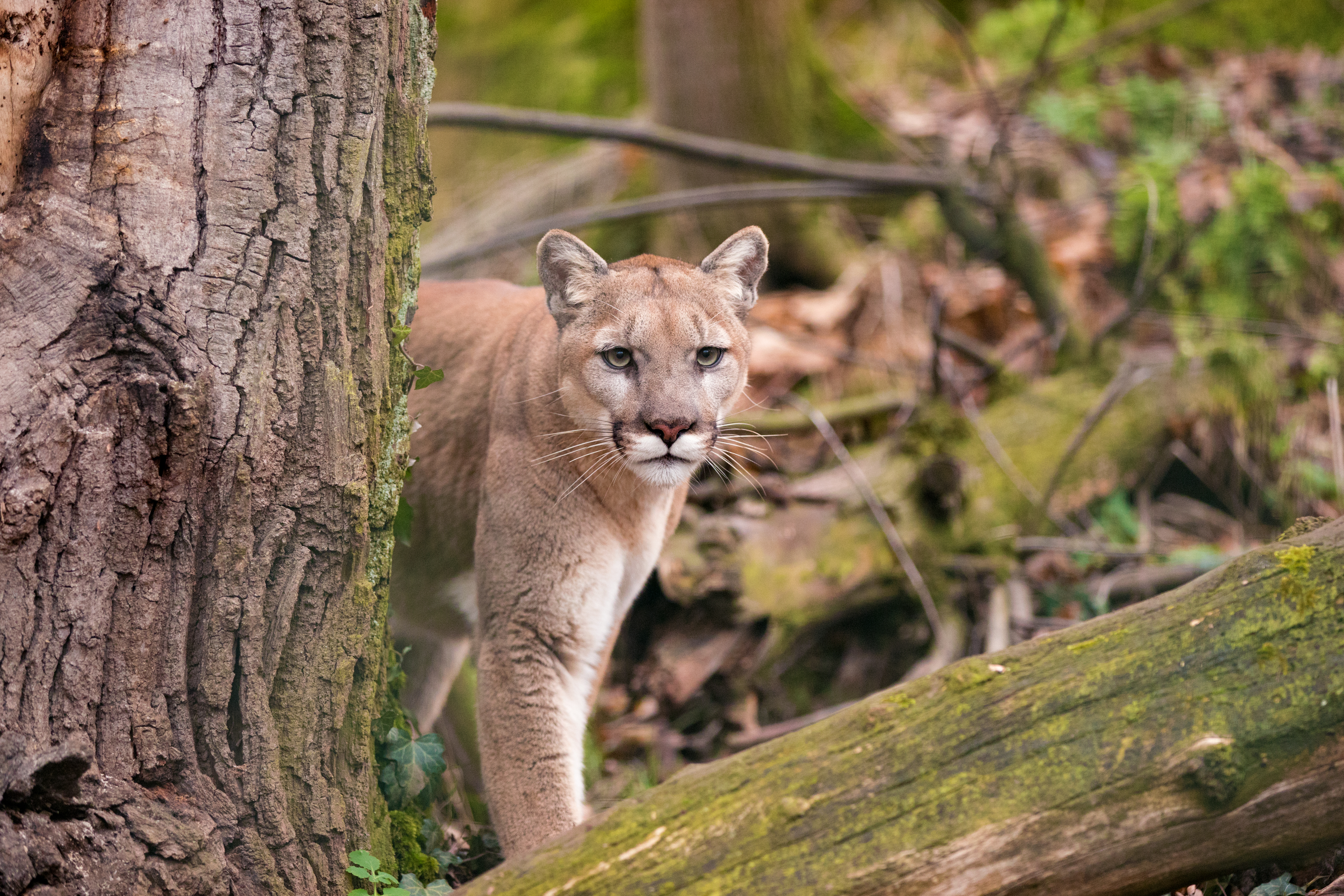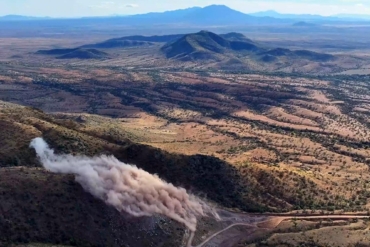A forest thinning project approved by the U.S. Forest Service threatens to cut down virgin forests on two California peaks. A host of entities, including Patagonia, aim to stop what they call the ‘commercial logging’ initiative.
About 120 miles northwest of Los Angeles, two peaks thrust skyward from California’s Los Padres National Forest. Some forests at the top of Reyes Peak (7,514 feet) and Pine Mountain (9,648 feet) are “virgin,” which means that they are free of roads and have never experienced commercial logging or any other industrial activity.
Now, the U.S. Forest Service (USFS) has opened an area equivalent to 575 football fields for a forest management project there — primarily, it says, for forest health and wildfire defense.
In response, a coalition of environmental, business, and recreational organizations is joining some local officials in taking exception. In a statement, the coalition called the measure a “commercial logging project.”
View this post on Instagram
On Wednesday, April 27, Patagonia joined Los Padres ForestWatch, the County of Ventura, the City of Ojai, and others in filing multiple lawsuits against the USFS over its logging plan. The coalition claims that one-third of the lands are virgin, and the USFS’s ingress would negatively impact the area, which is significant to endangered species, Tribes, and outdoor enthusiasts.
“Pine Mountain is 90 minutes from our corporate headquarters in Ventura and the area is important to our employees and customers because of its outdoor recreation opportunities including rock climbing, hiking and camping,” said Hans Cole, head of environmental activism at Patagonia.
Cole added, “This mountain is also home to old-growth conifers and some of the most diverse and unique habitats in the Los Padres National Forest. We have opposed this project since it was unveiled in 2020, and we have been supporting the grassroots environmentalists protecting Los Padres National Forest since 2004.”
The Accusations: Patagonia, Activists & More
The proposed project area is located on ancestral Chumash lands. The opposing coalition notes that the site is:
- historically and culturally important to Indigenous people
- popular with locals and tourists
- designated critical habitat for the endangered California condor
- and home to other sensitive wildlife, rare plants, old-growth conifer forests, and unique ecosystems.

The area may also soon fall under federally protected jurisdiction. The bipartisan Central Coast Heritage Protection Act (H.R. 2199), now awaiting final approval in the Senate, would include protections for the lands.
The USFS project would subject 755 acres to multiple clearing methods. And the proposal would allow unlimited mechanized cutting and removal of any living or dead trees measuring up to 2 feet in diameter. It permits the cutting of an undisclosed number of trees up to 5 feet in diameter, and sanctions the destruction of chaparral across all 755 acres.
In response, the USFS cites the need for better planning and preparedness to combat wildfires in the area — among other issues (see below).
“The purpose of the project is to provide safe and effective locations from which to perform fire suppression operations, to slow the spread of a wildland fire at these strategic fuel-break locations, and to reduce the potential for the loss of life, property, and natural resources,” the service said of the Reyes Peak initiative.
Allegations Explained
The coalition alleges violations of the National Environmental Policy Act (NEPA), Roadless Area Conservation Rule, Endangered Species Act, and National Forest Management Act.
It also takes aim at what it calls the Forest Service’s “failure to collaborate with stakeholders.” The USFS relied on a “categorical exclusion” under NEPA to expedite the project, which requires certain collaboration procedures. Per the coalition, the USFS did not meet the regulations.
The coalition said the categorical exclusion process focuses on small projects like painting government buildings on parklands. The process allows forest officials to bypass various environmental audit requirements under the NEPA. Los Padres ForestWatch first challenged the Forest Service’s use of the measure back in 2020.
The coalition also claims that the USFS violated the 2001 Roadless Area Conservation Rule’s prohibition on removing large trees. And it says the project violates the Endangered Species Act, because California condors roost in the larger trees scheduled for “unlimited” removal.
And the project would harm rare California spotted owls, northern goshawks, rare plants, and two species of bats experiencing population declines, according to the complaint.
View this post on Instagram
In a final allegation, the coalition says the USFS violated the National Forest Management Act because it failed to comply with Los Padres National Forest Plan standards that protect scenic integrity and the natural character of the area. It called the measures “a drastic elimination” of native vegetation.
Widespread Opposition
According to the coalition, the USFS approved the project over the objection of local elected officials, Indigenous leaders, scientists, more than 30 area businesses, 70 environmental and social justice organizations, and 15,000 members of the public.
Total objections, it claims, amounted to by far the greatest response any single project in Los Padres National Forest has received. Despite the unprecedented engagement, the Forest Service did not make any meaningful changes to the project and approved it in September 2021.
The USFS, meanwhile, said on its website in October 2021 that it had “reviewed, analyzed and catalogued these comments and determined there were no extraordinary circumstances that would lead to significant effects.”
The agency added, “The purpose and need of this project detailed the serious and growing threat of both uncontrolled wildfire in this area and the potential for the loss of life, property, and natural resources.”
The Defense: USFS Documents
So, is the USFS planning to commercially log virgin old-growth conifer forest on Tribal lands that’s a habitat for multiple endangered species?
The answer looks somewhat more complicated than an easy yes or no.
The agency states, “The primary goal of this project is to reduce tree densities and promote forest resilience to insect and disease, persistent drought, and wildfire. To address these threats, professional Forest managers will selectively thin specific areas to enhance forest health” in the area.
Based on the 25-page proposal, titled “Reyes Peak Forest Health and Fuels Reduction Project,” wildfire safety for community members and their property is the project’s key motivating factor. Secondary objectives include habitat conservation for threatened species like California condors and goshawks and, ultimately, to “create forests more resistant to the effects of drought, insect and disease outbreaks, and stand-killing crown fires.”
Specifically, the project will allow for “mechanical and hand thinning” of small diameter (< 24 inches) and dead trees from what it calls “densely packed stands.” Trees between 24-inch and 64-inch diameters would stay put unless they pose a safety risk. Then, prescribed burning will reduce ground biomass.
Selling the resulting timber appears to be a procedural byproduct and a cost remediation measure.
Because cutting trees and leaving them on the ground does not help mitigate the fire hazard, the agency said, the project includes a clause to remove the trees through a commercial sale. If a willing buyer is interested, that buyer could pay for the removal of the downed trees from the forest.
Any revenue generated through a sale would then help offset what the agency called “a small portion” of the project cost.
It’s unclear whether contractors will be able to cut trees with their own crews. But the USFS has firmly positioned itself to manage the project — and to comply with the plan, all workers in the forest will have to complete USFS training intended to protect California condors.
Forest Service Plans to Protect Endangered Species
While the plaintiffs argue that the USFS proposal violates the Endangered Species Act by threatening California condor habitat, the plan does include protections for condors and other threatened birds in the Los Padres National Forest.
The documents say the project will “avoid or minimize disturbance to breeding and roosting California condors by prohibiting or restricting management activities and human uses within 1.5 miles of active California condor nest sites and within 0.5 miles of active roosts.”
Goshawks and spotted owls receive less stringent protections, but still get a buffer, especially during their nesting and breeding seasons.
Also, workers would undergo “hazing” training to keep any condors attracted to work sites out of harm’s way. “[H]azing measures would be implemented to avoid the possibility that the birds would become habituated to human activities, which poses a risk to their well-being,” the proposal says.
Similar Projects May Play a Role
The coalition said the project exemplifies a series of Trump Administration proposals that increased timber targets, encouraged categorical exclusions, and lowered the price that timber companies paid for lumber harvested on certain public lands.
In another project in the same region, in Tecuya Ridge, a panel of federal appeals court judges recently found the USFS violated the Roadless Rule.
View this post on Instagram
The group filed all three Pine Mountain/Reyes Peak lawsuits in the U.S. District Court for the Central District of California in Los Angeles. The court will likely combine the cases and consider them together.
American Alpine Club Policy Manager Taylor Luneau, whose organization also took up the suit, hopes the lawsuit will force the USFS into more circumspect behavior on future projects.
“The Reyes Peak Project … undermines several of our most prized environmental laws,” Luneau said. “We hope this legal challenge will protect the recreation experience and the many natural and cultural resources of Pine Mountain, as well as encourage the Forest Service to more intentionally look before they leap.”








